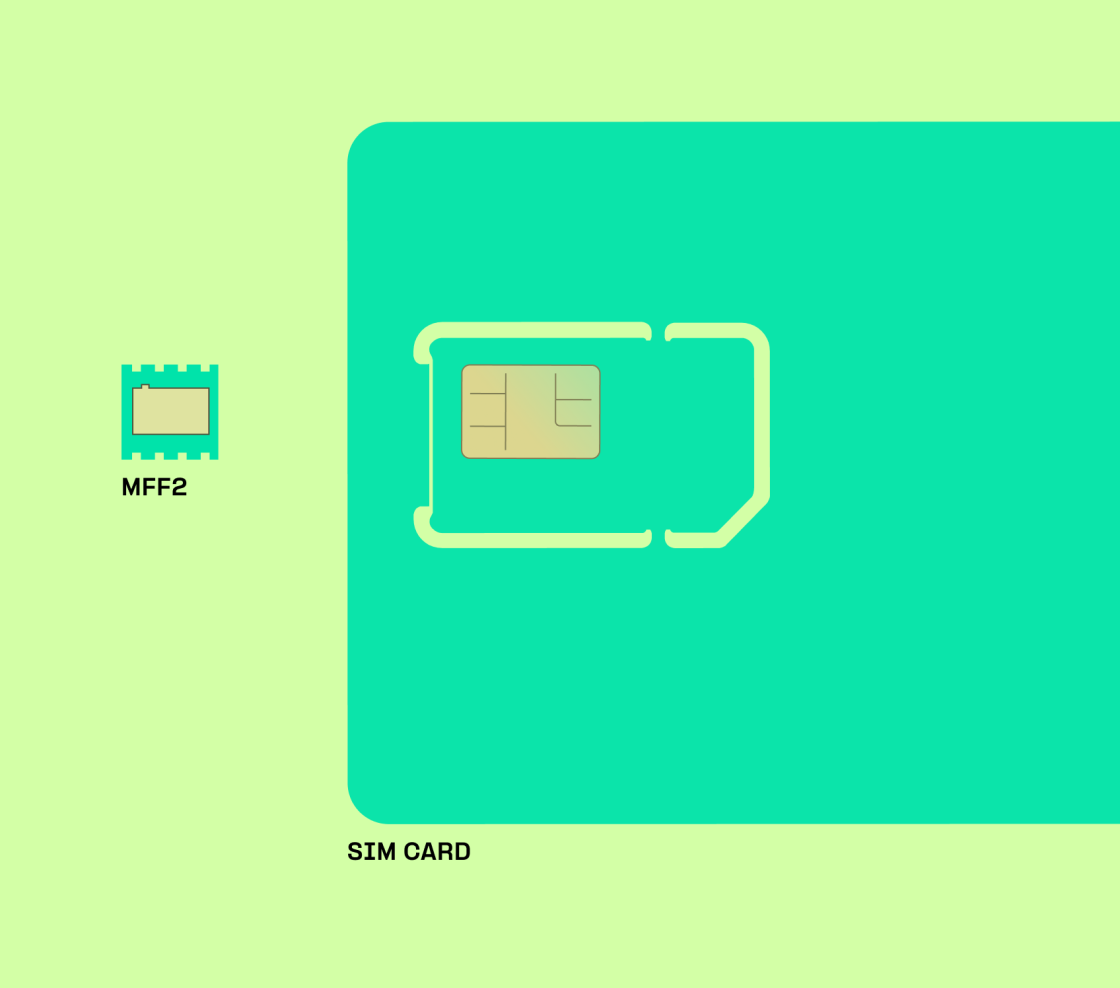Iot Sim copyright North America IoT Data Plan
Hologram Global Iot Sim Card Global IoT SIM Card Solutions
In the panorama of the Internet of Things (IoT), connectivity standards and protocols play a crucial function in guaranteeing gadgets can communicate seamlessly. As extra gadgets are connected, the need for effective interoperability will increase, leading to quite a lot of standards that serve completely different use cases and requirements. This comparability of IoT connectivity standards and protocols highlights the nuances that differentiate every technology, offering a clearer understanding of which might swimsuit particular functions.
LoRaWAN (Long Range Wide Area Network) is among the dominant protocols usually utilized in IoT purposes that require long-range communication. Its low power consumption makes it particularly efficient for battery-operated devices, enabling them to operate for a number of years without having a battery substitute. The protocol is designed for extensive space networks, making it appropriate for city, rural, and remotely deployed gadgets such as environmental monitors and smart city applications.
On the other end of the spectrum, MQTT (Message Queuing Telemetry Transport) is a lightweight protocol designed for resource-constrained devices and low-bandwidth, high-latency networks. Due to its publish-subscribe model, it allows devices to speak in close to real-time, making it particularly in style for functions in smart properties and industrial automation. MQTT isn't constrained by location, enabling units to speak regardless of where they are situated, as lengthy as there could be web entry.
Iot Device With Sim Card What Is An IoT SIM Card?

Zigbee and Z-Wave are two other protocols that have gained traction, especially in home automation contexts. Zigbee operates on low power and is designed for low information rate wireless personal area networks. With its mesh networking capability, it facilitates communication between a number of devices, creating a robust network that can extend its range considerably. Z-Wave, whereas related, sometimes operates on a decrease frequency and has a distinct architecture that tends to work better in indoor settings. Its targeting of client merchandise offers it an edge in user-friendly purposes.
Bluetooth additionally plays a vital role in IoT connectivity, particularly in wearable expertise and close by communication situations. The introduction of Bluetooth Low Energy (BLE) has expanded its functionality by allowing devices to speak with minimal battery utilization. This protocol is good for purposes where low power is essential however nonetheless requires an inexpensive data throughput. The vary tends to be shorter, making it appropriate for environments like private health units, smart locks, and other proximity-focused technologies.

Another vital player in the IoT area is Cellular connectivity, together with LTE and the emerging 5G networks. These technologies supply high data charges and widespread protection, making them best for applications that require real-time knowledge transfer, such as autonomous autos and distant surveillance systems. However, their energy consumption is mostly greater in comparison with different protocols, which can be a limiting factor for IoT units with battery constraints. The evolution of 5G is particularly thrilling, as it guarantees to facilitate even larger numbers of related units with lower latency.
A lesser-known, but impactful, standard is NB-IoT (Narrowband IoT), specifically designed for low-power, wide-area networks. It supports a excessive variety of linked units over a larger area, making it well-suited for rural purposes, smart metering, and smart agriculture. Its low bandwidth requirements are enough for transmitting small data packets, permitting gadgets to perform effectively with minimal power consumption.
Iot Sim Card South Africa IoT SIM Card
Comparing these protocols, a significant factor to assume about is the stability between vary, power consumption, and data rate. Zigbee and Z-Wave excel in mesh networks however could not cover as wide an area as LoRaWAN. Meanwhile, protocols like MQTT can prioritize knowledge switch efficiency over distance. The alternative between using a cellular framework or a specialised IoT protocol typically hinges upon the precise needs of an utility, together with geographic and technical constraints.
Security remains a urgent concern throughout IoT implementations. With the number of connectivity standards, making certain secure communication is paramount. Various protocols tackle security in numerous methods, incorporating measures similar to encryption and authentication protocols to safeguard knowledge. MQTT, as an example, permits for safe connections and payload encryption, whereas protocols like LoRaWAN have mechanisms to authenticate devices communicating over the network.
Compatibility is one other essential side. As manufacturers more and more develop IoT solutions, the flexibility to attach devices from completely different distributors is key. Standards like Zigbee and Z-Wave have established certification programs to authenticate devices’ interoperability. This compatibility fosters a more cohesive smart house environment, allowing gadgets to work in live performance somewhat than isolation.
Future developments in IoT connectivity standards are continually increasing the chances. Researchers and industry specialists are creating advanced protocols that combine the strengths of present click to read more technologies while addressing their weaknesses. The integration of artificial intelligence (AI) and machine studying into IoT networks is further enhancing automation and knowledge analysis, pushing protocols to evolve and enhance in real-time.
Telkomsel Iot Sim Card Global IoT SIM Cards Reliable Connectivity
Ultimately, choosing an IoT connectivity standard or protocol isn't merely a technical choice; it ought to align with the targets of the applying and the wants of its customers. The right choice could mean the distinction between a profitable deployment and a project affected by interoperability challenges, unnecessary costs, or lowered efficiency.
As IoT technology continues to mature, the importance of understanding and deciding on applicable connectivity standards and protocols will solely grow. Industry participants and developers should remain vigilant of tendencies and changes that influence the ecosystem. Knowledge of those protocols is important, as it equips stakeholders to make informed decisions that will define the next era of connectivity.
In conclusion, the comparison of IoT connectivity standards and protocols reveals a complex but fascinating panorama. By understanding the benefits and limitations of every standard, builders could make educated decisions that may optimize their IoT deployments, enhancing effectivity and effectiveness and ultimately paving the means in which for a more linked and intelligent future.
- Various IoT connectivity standards, corresponding to MQTT, CoAP, and HTTP, cater to different information transmission wants, influencing effectivity and software suitability.
- MQTT is light-weight and optimized for high-latency networks, making it best for low-bandwidth, resource-constrained gadgets.
- CoAP supports RESTful interactions and operates over UDP, allowing for decreased overhead compared to traditional protocols used over TCP.
- Zigbee and Z-Wave concentrate on low-power, low-data purposes, excellent for smart residence units and sensor networks.
- NB-IoT and LTE-M provide cellular connectivity specifically designed for IoT applications, offering wider coverage and higher penetration in city environments.
- Wi-Fi and Bluetooth, while prevalent, can wrestle with power consumption and scalability in massive IoT ecosystems, making them less perfect for sure use circumstances.
- LoRaWAN permits long-range, low-power communication, perfect for applications in remote areas requiring infrequent information transmission.
- Each standard or protocol might come with distinctive security features, influencing the selection primarily based on the IoT deployment's risk mannequin.
- The growing development of multi-protocol environments allows units to modify between standards, enhancing flexibility and interoperability within IoT ecosystems.
- Compatibility issues can come up from diverse IoT connectivity standards, necessitating cautious planning to make sure seamless communication throughout devices and platforms.undefinedWhat are the principle IoT connectivity standards obtainable today?
M2m Iot Sim Card IoT SIM card Networking Protocols Devices
The main IoT connectivity standards include MQTT, CoAP, LoRaWAN, Z-Wave, Zigbee, and cellular standards like NB-IoT and LTE-M. Each of those standards serves different use instances, providing varying ranges, power consumption, and data transmission capabilities.
How does MQTT differ from CoAP by method of use cases?
(Hologram Iot Sim Card)
MQTT is designed for high-latency and low-bandwidth environments, making it glorious for situations requiring reliable messaging, similar to remote monitoring. CoAP, then again, is tailored for constrained gadgets and networks, making it suitable for applications like smart residence automation the place simplicity and effectivity are crucial.

What components should I consider when choosing an IoT protocol for my application?
copyright Iot Sim Card IoT SIM Cards Available Anyone
Key factors include the application’s requirements for range, power consumption, knowledge payload size, and community conditions - Iot Sim Card Uk. Additionally, contemplate the level of security and scalability needed, in addition to infrastructure and gadget interoperability.
Is security a significant concern when evaluating IoT connectivity standards?
Yes, security is a paramount concern. Different standards provide varying levels of security features, like knowledge encryption and authentication measures. It’s important to evaluate how each standard addresses potential vulnerabilities to make sure the safety of delicate knowledge.
Does Nb-Iot Need A Sim Card IoT SIM Cards Explained Connectivity
Which connectivity protocol is best for long-range communication?
LoRaWAN is usually thought of one of the best for long-range communication as a end result of its ability to cover distances of up to 15 kilometers in rural areas. It is particularly efficient in applications like agricultural monitoring and smart metropolis deployments where gadgets are unfold out over massive areas.
How do power consumption levels vary amongst completely different IoT protocols?
Sim Card Iot Devices IoT SIM Cards Available Anyone
Power consumption varies significantly among protocols. For example, LoRaWAN and Zigbee are designed for low energy usage, appropriate for battery-operated devices needing long operational life. In distinction, cellular protocols like NB-IoT may consume more energy but supply higher bandwidth for critical purposes.
Can a number of connectivity standards coexist in the same IoT environment?
Iot Sim Card Guide Prepaid IoT SIM Netherlands
Yes, a quantity of connectivity standards can coexist inside the similar environment. This allows for greater flexibility and integration of assorted devices across completely different applications. However, it does require a well-architected system that may handle and route information between totally different protocols effectively.
What position does scalability play in selecting an IoT connectivity standard?
Scalability is crucial when choosing a connectivity standard, especially for applications anticipated to develop over time. Some protocols permit for simple addition of devices and seamless integration into existing networks, while others might have limitations that would hinder expansion.
Does Nb-Iot Need A Sim Card IoT Data SIM Card Plans Features
Are there particular industries that favor explicit IoT protocols?
Yes, specific industries over here typically favor particular IoT protocols based mostly on their unique necessities. For example, smart agriculture tends to favor LoRaWAN as a outcome of its long range, whereas residence automation typically utilizes Zigbee or Z-Wave for his or her low power consumption and mesh networking capabilities.